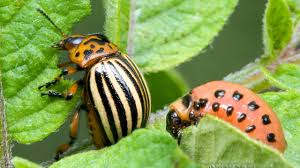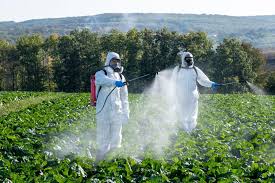Using Integrated Pest Management helps farmers and gardeners take care of plants without relying heavily on harmful chemicals. Integrated Pest Management, or IPM for short, is like a smart strategy to keep pests away without causing harm to the environment or our health.
Instead of just reaching for pesticides all the time, IPM looks at the bigger picture. It brings together different methods to control pests, like using natural predators or resistant plant varieties. This way, we don’t rely too much on chemicals that can be bad for the Earth and even for us.
Imagine your garden or farm as a big puzzle. Each piece is a different way to deal with pests. You might use friendly insects to eat the bad ones or plant certain crops that pests don’t like. It’s like building a team to protect your plants, and not just using one player all the time.
The cool thing about Integrated Pest Management is that it’s not just about killing pests. It’s about understanding them and their habits. By knowing when pests are likely to show up, we can be ready to stop them in their tracks. It’s like having a game plan for a sports match – knowing your opponent’s moves makes it easier to win.
Farmers and gardeners who use IPM don’t just focus on the problem when it happens. They think ahead and prevent pests from causing too much trouble. It’s like locking the door before a thief can get in, instead of waiting until they’ve already stolen something.
Using Integrated Pest Management is like being a detective in a garden or on a farm. You look for clues, understand the habits of pests, and then make a plan to keep them away. It’s not just about getting rid of bugs; it’s about keeping everything in balance, like nature intended.
In the end, Integrated Pest Management is like a superhero for plants. It protects them from harm without causing harm to the environment. It’s a smart, thoughtful way of gardening and farming that keeps everything in harmony. So, next time you see someone using Integrated Pest Management, know that they’re not just growing plants; they’re being Earth-friendly heroes!
Read Also: Are Snakes Good or Bad and What Do Snakes Eat? Find Out
How to Use Integrated Pest Management

Integrated Pest Management, or IPM, is a smart and eco-friendly way to keep pests in check without causing harm to the environment. Here’s a simple guide on how to use Integrated Pest Management effectively.
1. Know Your Enemy: Identify the pests causing trouble. This could be anything from tiny insects to larger animals. Understanding the type of pest helps you choose the right strategies.
2. Keep it Clean: A clean environment is the first line of defense. Regularly clean up crumbs, spills, and standing water. Pests thrive in dirty spaces, so keeping things tidy makes your home less attractive to them.
3. Natural Predators: Introduce natural predators to your space. Ladybugs, spiders, and certain birds can be your allies in controlling pests. Encouraging these natural enemies can help maintain a balance in your ecosystem.
4. Plant Smart: Choose plants that naturally repel pests. Basil, mint, and chrysanthemums, for example, can act as natural deterrents. Planting these around your garden or home can discourage pests from setting up camp.
5. Rotation of Crops: If you have a garden, consider rotating your crops. This prevents pests from becoming too comfortable in one area. It’s like giving them a moving target, making it harder for them to establish a permanent residence.
6. Biological Controls: Introduce biological controls, like nematodes or certain bacteria, which can specifically target and control pests. These biological agents are environmentally friendly and reduce the need for chemical pesticides.
7. Monitoring: Regularly check for signs of pest infestations. Early detection allows for quicker and more effective action. Keep an eye out for chewed leaves, droppings, or any unusual activities that might indicate a pest problem.
8. Mechanical Barriers: Use physical barriers to keep pests out. This could include screens on windows, sealing cracks in walls, or placing barriers around crops. By physically preventing pests from entering, you reduce the need for chemical solutions.
9. Sustainable Practices: Embrace sustainable gardening and farming practices. Focus on soil health, proper watering, and choosing resilient plant varieties. Healthy plants are less susceptible to pests, reducing the need for intervention.
10. Least Toxic Methods: If you have to resort to pesticides, choose the least toxic options. Look for products labeled as environmentally friendly and follow instructions carefully. This ensures effective pest control with minimal impact on the ecosystem.
Remember, the goal of Integrated Pest Management is to find a balance where pests are controlled without causing harm to the environment. By combining various strategies and staying vigilant, you can create a pest-resistant environment using simple and sustainable methods.
Read Also: Wild Snake: Description, Health and Nutrition
Benefits of Using Integrated Pest Management

Integrated Pest Management (IPM) offers a host of benefits that make it a sustainable and effective approach to pest control. Here are some key advantages:
1. Environmentally Friendly: IPM focuses on minimizing environmental impact by emphasizing non-chemical methods whenever possible. This makes it a more eco-friendly choice compared to traditional pest control methods.
2. Reduced Chemical Usage: By incorporating various techniques like biological controls, natural predators, and cultural practices, IPM reduces reliance on chemical pesticides. This helps in lowering the overall use of potentially harmful chemicals in pest management.
3. Cost-Effective: Over the long term, IPM can be more cost-effective than relying solely on chemical treatments. By preventing infestations and addressing issues at an early stage, you can avoid costly damage control measures.
4. Preserves Beneficial Organisms: Unlike broad-spectrum pesticides that can harm beneficial organisms, IPM targets specific pests. This preservation of natural predators and other helpful species helps maintain a balanced ecosystem.
5. Minimizes Resistance Development: Constant exposure to the same chemical pesticides can lead to the development of resistance in pests. IPM’s diverse approach disrupts this cycle, making it less likely for pests to develop resistance to the control methods.
6. Promotes Crop Health: IPM not only controls pests but also focuses on overall plant health. Healthy crops are more resilient to pest attacks, reducing the need for aggressive pest management measures.
7. Enhances Food Safety: By using fewer chemical pesticides, IPM contributes to safer food production. It minimizes the presence of pesticide residues in crops, promoting healthier and safer food consumption.
8. Customizable and Adaptive: IPM is not a one-size-fits-all approach. It allows for the adaptation of strategies based on specific pest issues and environmental conditions. This flexibility makes it suitable for various settings and agricultural practices.
9. Long-Term Solutions: Rather than providing temporary fixes, IPM aims for sustainable, long-term solutions. By addressing the root causes of pest issues, it reduces the likelihood of recurring problems.
10. NoCommunity and Stakeholder Support: IPM often garners support from communities and stakeholders who value sustainable and environmentally conscious practices. It aligns with the growing awareness of the importance of responsible pest management.
In conclusion, Integrated Pest Management stands out as a holistic and forward-thinking approach that not only effectively controls pests but also promotes environmental sustainability, cost savings, and long-term ecosystem health.
Read Also: How to Make Money from Waste

